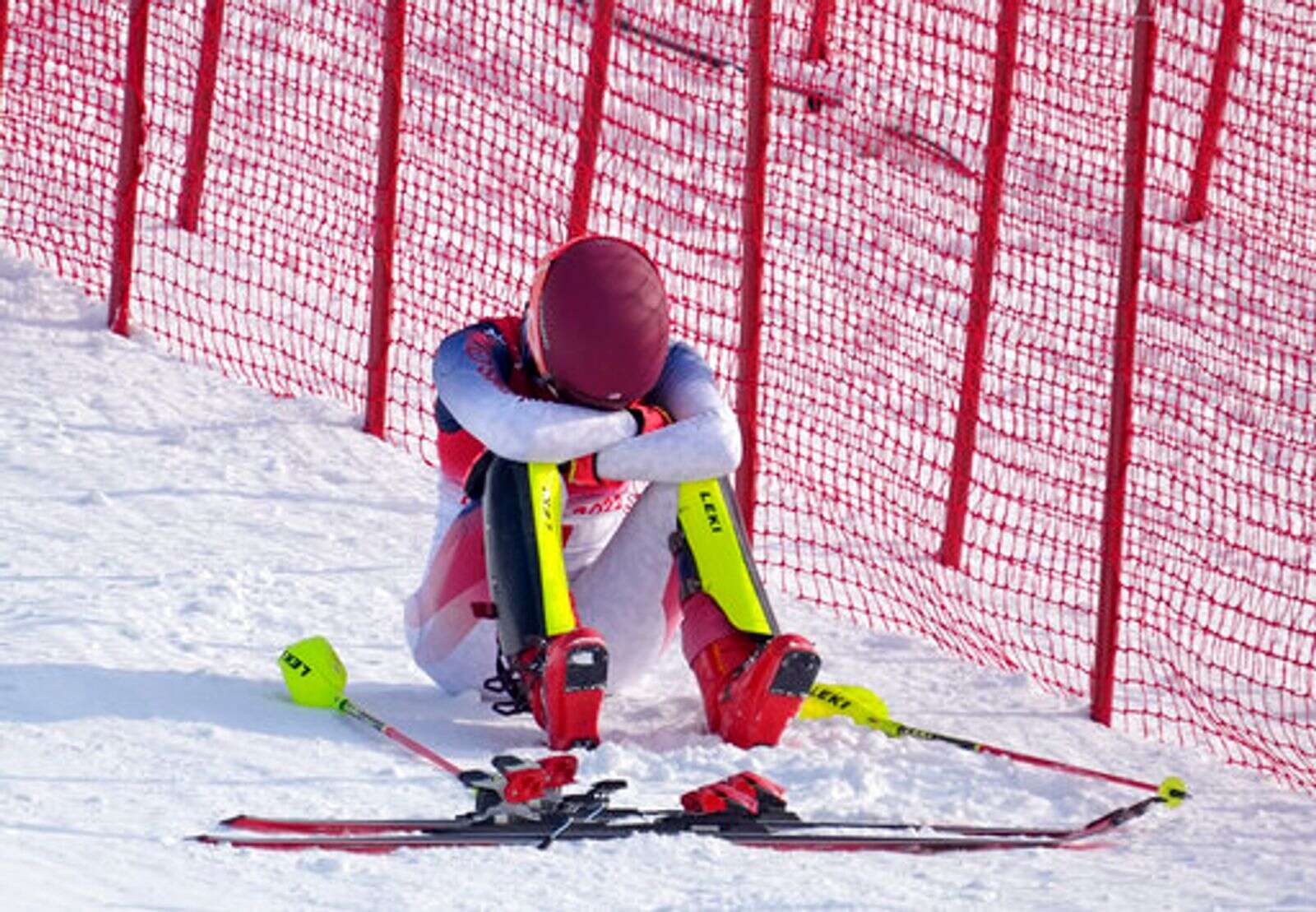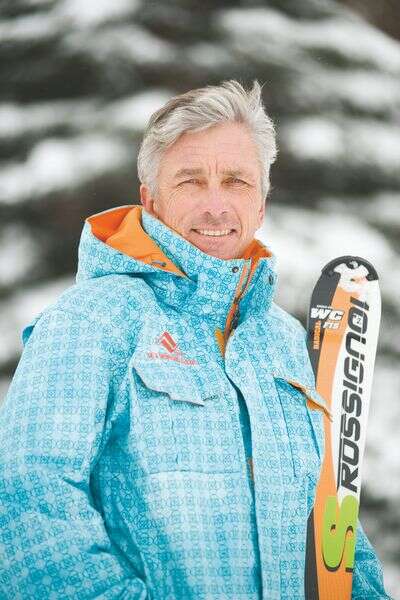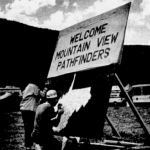Inside the skiing pipeline: What happened?
A series on the health and development of the U.S. Ski Team pipeline

Exactly 40 years separated that day in Waterville, Maine, when McMurtry and the U.S. women’s Alpine team celebrated the country’s first and only Nation’s Cup title and the recent Beijing Olympics, where the same team came home empty-handed.
How exactly, did we arrive here?
The way Aldo Radamus sees it, the lack of medals in Beijing was to be expected.
“You know Bode, Daren, Julia, Lindsey — there was a gap that formed following that group of really outstanding athletes, and the group of athletes that are rising are moving into that level of competitiveness,” he said.
“Going into the games, there was only one athlete one would consider a medal favorite — of course that’s Mikaela — and that’s an awful lot of expectation to place on one athlete’s shoulders.”

Support Local Journalism

For McMurtry, it was more a manifestation of a deeper problem.
“The ski team had developed a model that worked,” McMurtry, who left the ski team in 1984, said. The team failed to medal at the 1988 Calgary Games after being the top Alpine team in Sarajevo four years prior.
“In ’84, we left a good team for the next generation,” he said.
In 1987, McMurtry was brought back and asked to put together a 10-year plan for development. His regional proposal, dividing the country into three regions — Eastern, Rocky/Central, and Western, laid the foundation for successes in the late 90s and early 2000s.
“The goal was to cut down travel, cost and time away from school — keep the kids local,” McMurtry outlined.
“The other part of the program was to involve the local coaches and athletes in regional projects,” he continued. When athletes were selected for camps, the coaches followed.
“So, there was continuity there, and the coaches feel part of the program,” he said.
The structure is still in place today, “But the difference is that today, when they get invited to those, they have to pay!” McMurtry exclaimed. According to the U.S. Ski and Snowboard Hall of Fame member, it started in 2007, when U.S. Ski and Snowboard decided to construct the Center of Excellence in Park City.
“Really, for the first time in the history of the ski team, money was raised for bricks and mortar instead of going to athlete development.”
It was a move Warren Helman, who co-founded Stratton Mountain School and was the chairman of the U.S. Ski Education Foundation as well as a trustee and president of the U.S. Ski Team from the late ’70s to mid-’80s, never would have made, according to McMurtry.
“His belief always was, every dime that’s raised goes towards athletes, athlete development, and coaches,” McMurtry said. “We’re not raising money for bricks and mortar.”
According to Lange, money for the COE didn’t affect athletic support but came from a completely different fund backed by wealthy donors. Either way, athletes like Ted Ligety ended up paying to be on the national team for a period of time.
“So, you have parents paying these exorbitant fees to be in clubs, and then their kid gets named to the U.S. Ski Team, and here’s another huge barrier,” said McMurtry. “I mean, how many national teams charge their athletes to be on the team?”
McMurtry said skiing has always been competing for the best athletes with football, baseball, soccer, etc. But, in the ’60s, ’70s and ’80s, the sport stood a chance. Now, he sees the financial burden turning would-be-athletes away.
“When I grew up, skiing was something kids in the mountain valleys did growing up — be a ski racer,” McMurtry lamented. The Aspen-native recalled forking over all of $100 to be in ski club, receive a season pass, and, if they were good enough, three free pairs of skis. The coaches’ salaries were paid for by the parks and recreation department. Being king of the hill meant learning how to race.
“The best skiers on the mountain were the racers,” echoed Mike Brown of the era when his dad, Byron, started Buddy Werner.
“If you wanted to be a good skier, the easiest way to learn how was to be a ski racer,” he said of his dad’s logic in starting the affordable learn-to-ski program.
McMurtry grew up with Andy Mill, who would go on to be the most successful American Alpine racer at the Innsbruck Olympics. As a high schooler, he was a skier, but he was also the quarterback. The multi-sport trend was common even at the top.
“On the women’s team, we had athletes that would have been successful in other sports at an international level,” he said, citing Holly Flanders.
“She could have been a top cyclist,” he said of the two-time Olympian.
“Those were the kind of athletes that we had. And we won the Nation’s Cup with a team that was focused and had opportunities growing up but they had that one thing you need to win at the international level, and that’s that genetic component.”
McMurtry credits a broad base for ensuring that he received world-class talent by the time athletes arrived at his door. He thinks the move to force athletes to pay to be on the national team, combined with the rising cost — Radamus’ “arms race” at the youth and junior levels discussed earlier — served to “narrow the pool completely.”
“If this system had been in place in the ’80s and ’90s we would not have had Phil and Steve Mahre, Billy Johnson, Picabo Street, Bode Miller, Cindy Nelson … I could go on and on and on,” he said.
“I’ll tell you right now, Phil and Steve Mahre would have been playing college football.”
Andy Phillips was the No. 2 ranked junior slalom skier in the world at 17 with his mind set on the Olympics. When he was told that he would need to cover his expenses to Sochi in 2014, he gave up on his dream and walked on to the University of Utah, where he became a second-team All-American and was drafted by the Chicago Bears.
“When you are trying to keep great talent in the sport and in their home programs, and you’re competing with every other sport for that top talent — kids who could be good in baseball, track, you name it — we can’t keep those kids or we’re not going to even attract those kids.”
The decision in 2007 didn’t impact the Olympians in 2010 and 2014, per se, as they were products of the pipeline envisioned by McMurtry.
“Julia Mancuso, Bode Miller, Picabo — I can’t begin to take any credit for that — but we had a pipeline,” McMurtry stated.
“The athletes and families and coaches — they get the credit — but the point is that we had a pipeline in place. We funded development.”
Just as the effects of McMurtry’s pipeline lingered, the impact of the U.S. Ski Team’s current move to fund their A and B team athletes will take time.
“But, to see the results of that, it’s going to take, if they do everything right, 10 years, to see the benefit of that,” said McMurtry.
“But we lost a whole generation of athletes of young talent who, like I said, went to play with the Chicago Bears.” Lange pointed out that the sport’s evolution has added variables to the cost equation.
“It’s true and it’s not true. There’s things that are better now and things that were better then. That’s the truth, but evolution happens,” he said.
“The ski team does not want to charge athletes. It just got to the point where they didn’t have enough support or sponsorship to do it. So, rather than cut the number of athletes on the team, they offered the team, but at a price.”
Lange continued, mentioning recent changes at U.S. Ski and Snowboard in this regard, saying, “The backers came behind it and now, nobody pays to be on the ski team, except those that didn’t make criteria but they’d still like to give an opportunity to.”
One team
McMurtry and Cindy Nelson agreed that the main strength of the dominant U.S. program in the 80s was the team aspect.
“It was not one athlete,” said McMurtry, who guided athletes to four World Cup titles in addition to the overall 1984 Olympic medal count win and 1982 Nation’s Cup.
“It’s an individual sport, but the perspective of it adds a team. You need the team structure to be able to do this, especially for Americans,” added Nelson, who referenced the “John Atkins” effect in part three of this series. Atkins not only “put everyone back together” as an athletic trainer, but cultivated a culture of teamwide support, figuring out how to get the world’s most driven individual athletes to reach their potential while simultaneously developing their teammates — who were also competitors.
“By the time we won the Nation’s Cup, it was something none of us had any issues with. We all wanted to be there for our teammate,” she remembered.
“Everybody trained together. We didn’t have a separate course, separate coach — it was together as a team,” McMurtry said. “We had the young athletes training with the top proven World Cup athletes.”
In this regard, Nelson, one of the key pillars on McMurtry’s team, sees Shiffrin’s presence as a bonus.
“We have the best in the world as the model athlete to be competing with and against. Mikaela is at the top of the peak and she continues to improve, which is such a compliment and a statement to her greatness,” she said.
“The other athletes on the team with Mikaela at the time that she is skiing are fortunate to be able to have her there. If you don’t, it’s really hard to continue to improve. As a person trying to become as good as they can become, chasing Mikaela is just great. The competitors will continue to improve and the team will get stronger and stronger, much because of Mikaela’s greatness.”
McMurtry is not convinced this collective striving is happening, though. In the same way that Debbie Armstrong and Christin Cooper gained confidence and found international success by practicing with Tamara McKinney, the 1983 World Cup overall winner, McMurtry believes the current team is passing up a golden opportunity with Shiffrin.
“I think the U.S. has really missed out because they’ve had some great athletes come up. They’ve had world junior champions on the women’s side that were never allowed to train with Mikaela Shiffrin because she had her special program, and we’ve really missed out,” he argued.
“Then we arrive at Beijing and all this pressure — Mikaela’s carrying the whole team on her shoulders because there wasn’t a team,” he said.
“We had good athletes with her, but we hadn’t developed a team. It was just Mikaela.” His compelling conclusion is not meant to take away from the Edwards legend.
“I am so impressed with the success that Mikaela Shiffrin has had — it’s absolutely phenomenal. Greatest of all time,” he said.
“We won as a team.”
Putting the Stars in stripes
“We’ve always ridden the back of stars,” said Peter Lange in reference to the 2022 Beijing Olympics. Lange postulates that, with a couple positive breaks, Beijing could have looked completely different on paper. Breezy Johnson stays healthy, River Radamus goes a hair faster, and Shiffrin has an average weekend instead of a catastrophic one, and “suddenly it’s the most amazing Olympics we’ve had in a long time,” he postulates. “It’s hard to blame the program.”
From Vonn to Bode to Picabo to Ligety, the U.S. has produced a handful of undeniable worldbeaters. Dan Leever pointed out that many of those stars simply arrived ready to go.
“I don’t think a lot has changed, and I think up until recently, we’ve made the same mistakes for the last 25 years,” he stated of U.S. Ski and Snowboard. “The fact that we had some amazing success along the way was really nothing to do with U.S. skiing, it had to do with some amazing athletes that bubbled up out of nowhere. They weren’t created by the U.S. Ski Team; they were created by the luck of the draw.”
Leever brought up Lindsey Vonn as a prime example.
“She showed up at 15 ready to win World Cups. That’s a bit of an exaggeration, but not a big one,” he said.
“Clearly there’s something wrong with development because we’ve not achieved the kind of success we should, given the numbers we have.”
If anyone can speak to the raw data behind the development discussion, it’s Leever.
Check out tomorrow’s Vail Daily to read Part five: “The Leever Study.”





